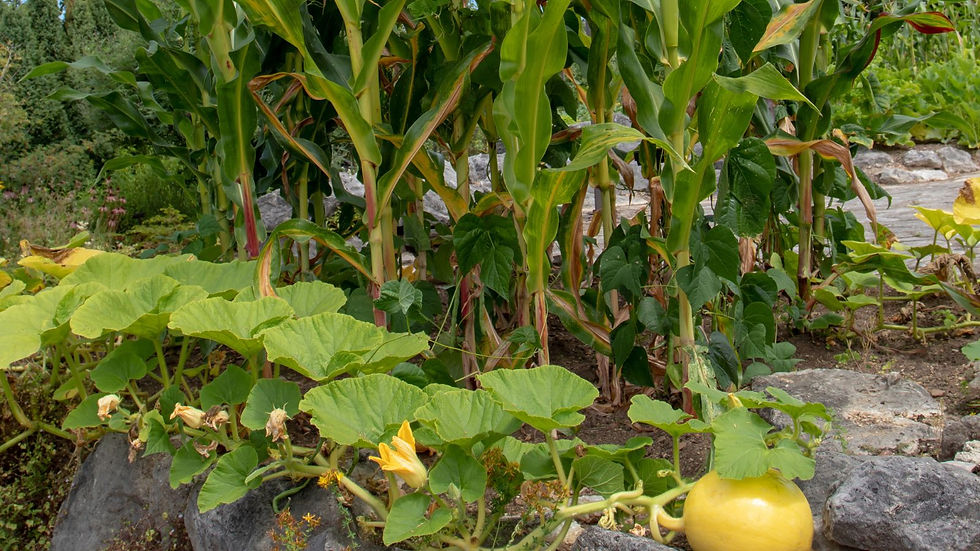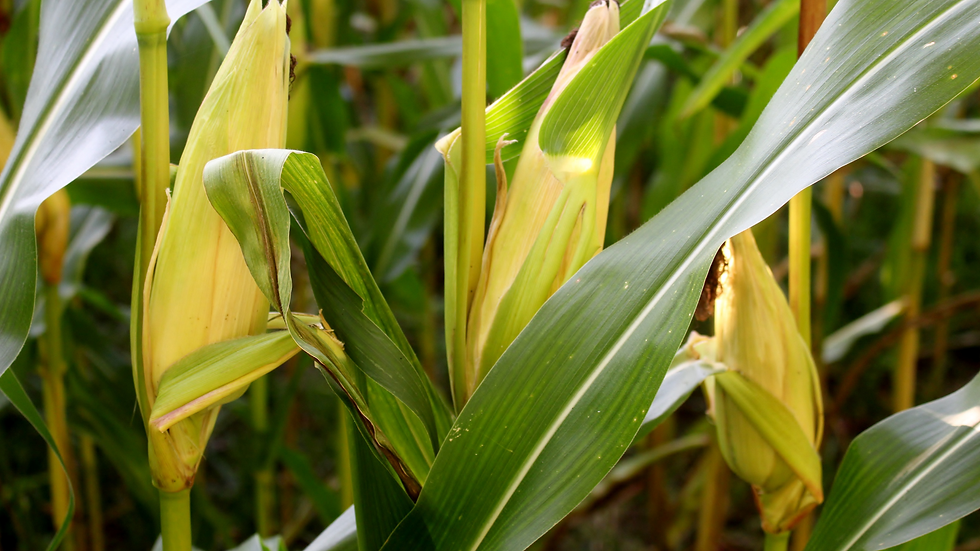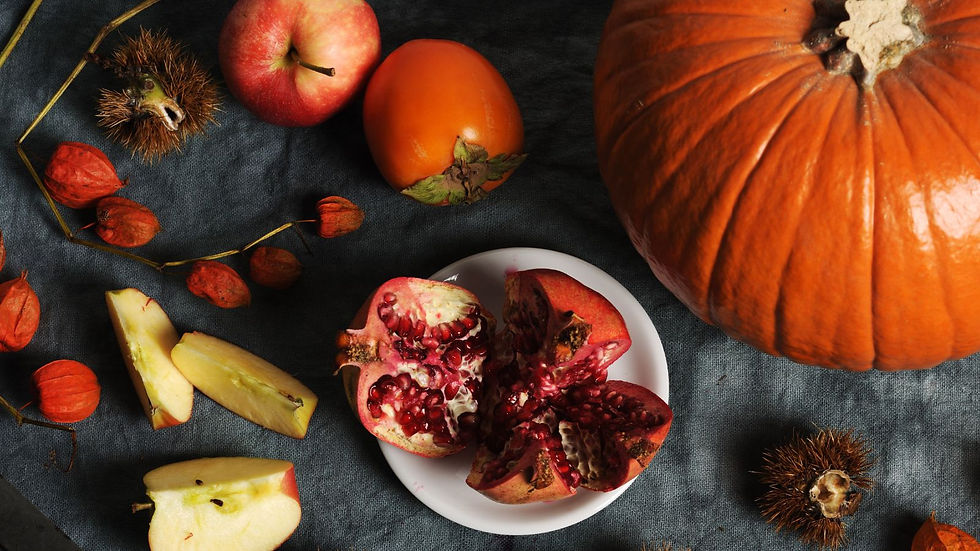Ancient Agriculture: The Three Sisters Planting Method
- b1415jimenez
- Feb 22, 2024
- 3 min read
Updated: Aug 20
In this post we’ll go back in time to discuss agriculture practices that date back 500+ years.
Oftentimes modern gardeners are stressed by costs of items like stakes, tools, seeds, soil, fertilizers, trellising and much more. But humans have cultivated plants long before any Garden Center opened its doors. So how was it done? The answer is amazingly simple.
They developed and practiced time-tested planting methods that required little fuss. One such method is referred to as the Three Sisters Method.

This method is a technique of interplanting 3 crops; Corn, Beans and Squash. These 3 foods have been pillars of the Indigenous American diet for centuries. Interplanting refers to growing crops in close proximity, mimicking the free flowing patterns found in nature.
Here's how it works: The corn, tall and fast growing, shoots up creating a natural pole for vining bean crops. The beans climb upward yet add nitrogen to the soil from their roots. The squash and corn feed on the nitrogen and thrive. The squash, low growing with large wide leaves, spreads about, creating shade for the soil, allowing it to retain water longer. A perfect match. After harvest some of the seed is saved for the following growing season.

Not only does this planting method leave little work for the farmer besides planting and harvesting; the diet the 3 crops provide for is rich in vitamins, minerals and even protein in the beans. Also, all 3 crops are incredibly versatile; can be eaten fresh or easily stored long term. Fresh corn could be incorporated in a variety of traditional dishes while the dried corn could be ground down into powder to make breads or drinks. The gourds could be harvested young and tender to cook fresh or left to mature and used later. The beans could be picked young and eaten fresh or left to dry on the vine for cooking. And because it was so simple and effective, it could be planted just about anywhere in open land, in hills, fields and even in rocky soils.

For some native peoples the Three Sisters was regarded in a special, spiritual and cultural way. The Seneca peoples believed the spirits of the 3 sisters were life-sustaining and inseparable. The Iroquois and the Cherokee understood the plants as family because they nurture each other as such.
___
I do a lot of ag related research in my line of work. I read other blogs extensively and do project research as needed. And so I’ve known of this method for years now, but I was surprised to hear my father, just the other night, mention it in his own experience.

My parents are both immigrants from southern Mexico, and my father spent the majority of his childhood and teen years there. We were discussing legume varieties (a houseful of garden enthusiasts). When he mentioned that as a child he had been tasked with planting gardens full of corn, beans and squash. One child would be in charge of going around the plot with a hoe and digging shallow planting holes, while the other went behind, adding 2 corn kernels, 2 beans and 1 squash seed. At the end it was all watered in.
I was surprised and delighted to hear that only did he himself take part in this now very famous piece of indigenous farming , but that his community likely continues to grow food like this in the modern day.
---
Anyone can do this in their own garden, in the central and southern California climate it’s an easy method of high-yield vegetable gardening.
So yes the Three Sisters is an ancient method of interplanting, but it’s also a cultural tradition that exists even today.








Comments